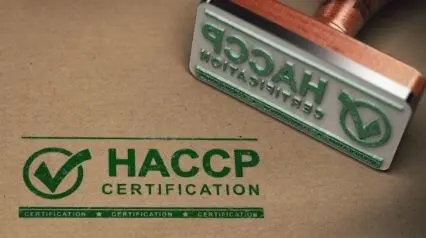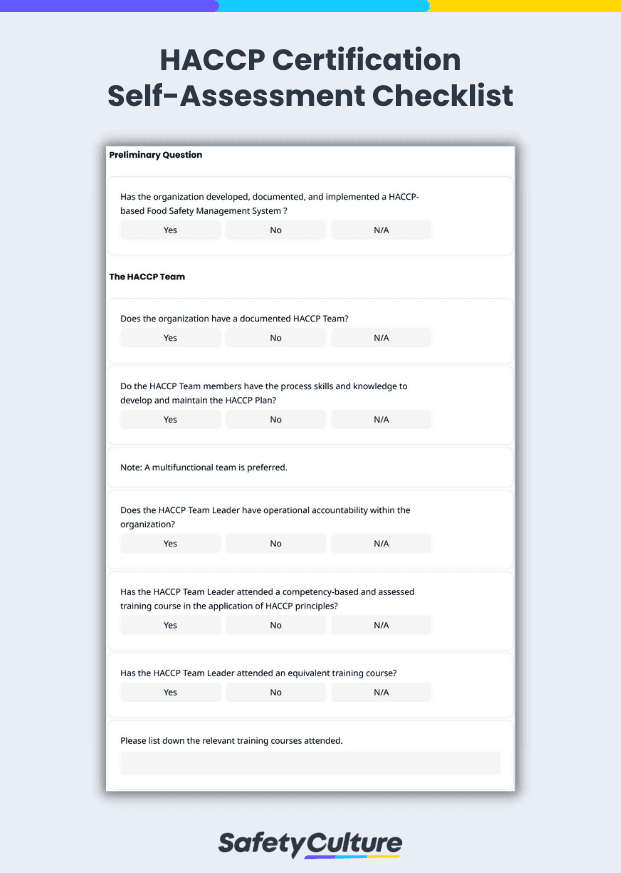What is HACCP Certification?
HACCP (Hazard Analysis and Critical Control Points) is a food safety management system that’s recognized around the globe. Obtaining a HACCP certification provides assurance to the public that an establishment has a proper food safety program in place that ensures risks to food safety are controlled to a point where food and ingredients are safe for consumption.
The World Health Organization (WHO) recommends that businesses and organizations that handle food and food items have a HACCP food safety program in place to ensure that the food products they produce or serve are safe to be consumed. Although used by organizations to ensure high food quality, the focus of HACCP is on food-related health safety concerns and is used to identify, assess, and mitigate hazards that pose significant risk to food safety. HACCP covers industries that are involved in food manufacturing, handling, and distribution and accounts for the biological, chemical, and physical hazards involved in the food supply chain.
Why Is Hazard Analysis and Critical Control Points Important?
The world’s top food vendors and manufacturers use HACCP as a food safety management system to ensure compliance with region-specific regulations and Global Food Safety Initiative (GFSI) audit protocols. The GFSI is a private organization that sets an internationally recognized benchmark for food safety and farm assurance standards. HACCP certification helps build brand trust by ensuring food safety through systems and procedures that help minimize risk. Having a HACCP plan in place helps both operations and management teams in the management of critical control points. A critical control point (CCP) is any step in an organization’s process that presents an opportunity to prevent, eliminate, or reduce hazards to acceptable levels. CCPs typically refer to procedures that are done haphazardly or not in accordance with set standards.
While food safety should be of utmost importance, HACCP certification also provides opportunities for organizations to increase operational efficiency, shorten production times, and ultimately reduce costs. A proper HACCP plan complemented by regular inspections will also help prevent food safety incidents, product recalls, and legal action that can hurt a company’s reputation and erode consumer trust.
How to Get HACCP Certification?
To get HACCP-certified, an organization should go beyond just creating a HACCP food safety program and take a look at other prerequisite safety programs like hygiene and sanitation, pest control, and proper food waste management. Since the food services industry involves dealing with suppliers, distributors, and other vendors, it’s also vital that businesses ensure that these companies or establishments have similar HACCP food safety and prerequisite programs in place. Here are the steps required for an organization to obtain HACCP certification:
Step 1: Prerequisite programs (PRP)
A key component of an organization’s HACCP system, prerequisite programs are put in place to ensure that the operational conditions of a site are designed to control hazards that pose a threat of contamination and be favorable to the safe and hygienic production, handling, and distribution of food and food products. A GMP (Good Manufacturing Practices) program is a typical prerequisite program for HACCP because it helps ensure that the production of food and other products are controlled to adhere to set quality standards. Aside from manufacturing practices, other aspects of the site and its business processes should also be considered, including building and equipment design, pest control measures, tools and personal protective equipment (PPE) used, hygiene facilities, and the handling and storage of supplies.
Step 2: HACCP Plan
An organization should create a HACCP plan that is based on scientific evidence to ensure that its implementation helps eliminate or reduce risks to human health. The plan should be systematic enough to identify and assess hazards and establish measures that focus on prevention instead of end-product testing. It should also be designed to adapt to change, since an organization’s requirements may change through time due to advances and innovations in product and equipment design and processing procedures. Obtaining buy-in from both employees and management teams is vital because a successful HACCP plan requires both parties’ full commitment and cooperation. As such, it’s a program that should be properly disseminated throughout the entire organization and adhered to by all its members.
Step 3: Third-party Audit
Once an organization has a HACCP food safety program in place, it’s time to prepare for a third-party certification audit conducted by a qualified food safety auditor. This involves a thorough review of an organization’s entire HACCP system to ensure that it meets all compliance standards. Food safety auditors are trained to be thorough but cautious during third-party food safety audits, and it would be beneficial for organizations to conduct their own internal audits pre-certification and provide HACCP training to all employees. Unannounced food safety audits work best when preparing for a HACCP certification audit because this helps ensure that employees and relevant personnel adhere to HACCP principles. Here are a few simple tips to follow in preparation for a HACCP certification audit:
- Conduct random food temperature and data collection inspections. Record food temperatures at various stages like walk-in, freezer, and final preparation temperatures. A digital temperature sensor will help in taking accurate temperature readings in real-time, improving overall temperature monitoring of ingredients and food products.
- Inspect and test all equipment, including food preparation, processing, and storage equipment, to ensure that they are in good working condition and fall under safe operating parameters.
- Review safe food-handling procedures and ensure that all employees comply with HACCP food safety standards. Procedures reviewed should encompass all aspects of food handling, preparation, and storage.
- Ensure that proper HACCP documentation and recordkeeping is done at all times. This will help identify problem areas so they can be addressed appropriately.
- Keep abreast of local food safety regulations and make them part of the organization’s HACCP food safety program to ensure compliance.
What are the Costs Involved?
The cost of getting HACCP-certified depends on the size of the HACCP or food safety program and physical location of the organization. Other costs to consider include internal and external audit costs, program development costs, costs related to program implementation, HACCP program maintenance costs, cost of HACCP training, and potential costs related to loss of business if the HACCP plan isn’t successful.
Regarding the time investment, it depends on the type of HACCP certification you applied for, the scope of the audit, and the physical size of the organization. A third-party HACCP audit could take anywhere between one and five days; the prerequisite programs and creation of the HACCP plan depends on the organization and should also be considered.
What are the Different Certificate Types?
Although HACCP is an internationally recognized food safety management system, there are types of HACCP certification that an organization can apply for depending on their location and the regulations that cover how their business operates.
ISO 22000:2005
ISO 22000:2005 certification assures consumers and the public that an organization is capable of controlling food safety hazards to a level that ensures the food they produce or distribute is safe for consumption. Organizations of any size that are involved in any aspect of the food supply chain can apply for this certification to help ensure that they have systems and measures in place that maintain or enhance food safety.
Safe Food Warranty
The Safe Food Warranty certification is a popular alternative to ISO 22000:2005 due to its more user-friendly process. It’s typically used by primary producers, food packing and transport companies, wholesalers, restaurants, and catering companies, but any organization involved in the food supply chain can apply for the certification. It’s used by businesses to demonstrate their commitment to safe food practices.
HACCP Warranty
The HACCP Warranty certification is essentially similar to Safe Food warranty but is additionally supported by JAS-ANZ (Joint Accreditation System of Australia and New Zealand) accreditation. All organizations involved in the food supply chain can apply for this certification.



